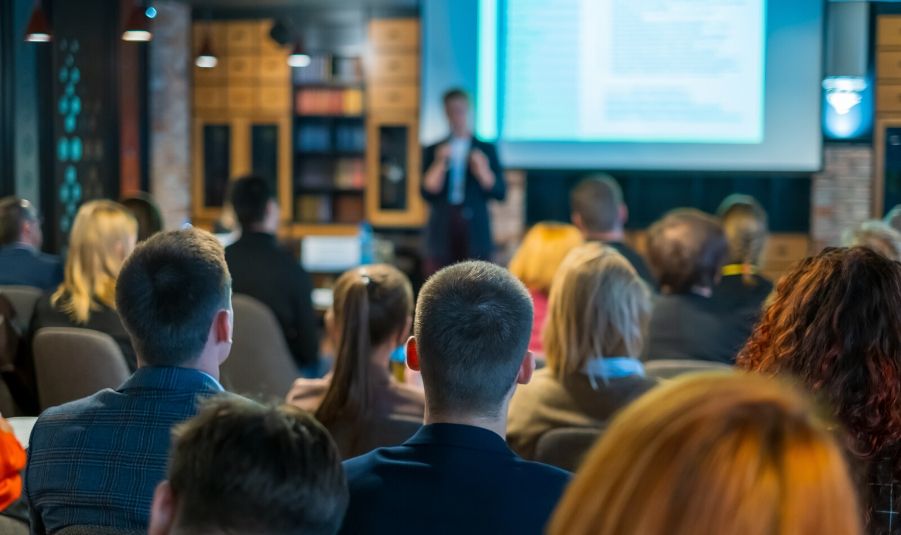Attending a convention or marketing event can be an incredibly lucrative strategy for businesses across a wide variety of industries. It’s also a venture that requires a lot of planning, preparation, and organization to execute successfully. There are several measures one should take to ensure everything goes off without a hitch, both before, during, and after the event. One measure that’s extremely important is the collection of field research. There are many different goals when conducting field research, and there are many different avenues a company can take to collect the necessary data. This guide to conducting field research at events will help you choose the method and means of collection that best suits the goals and business strategy for your company.
Understand the importance of field research
Before you can begin conducting field research and collecting data, you must first understand the importance of field research and the benefits it can yield for your company. At its most base level, field research refers to the collection of important information as it pertains to consumer behavior, preferences, and purchasing patterns, as well as overarching market trends. The information gathered through field research enables a company to alter its business strategy to more closely mirror the exact wants and needs of its consumers. In observing the desires of it consumers and tailoring their business strategy accordingly, a company can significantly increase customer trust and loyalty. Consumers are more likely to trust a company that they feel accurately reflects their individual desires and over time, a company’s credibility will begin to build.
Understand your buyer persona
To properly understand the wants and needs of your customers, you must first understand who they are as consumers. This is what’s referred to as your buyer persona—the semi-fictitious representation of your customers based upon real characteristics. These characteristics may be clearly visible, such as gender, race, and age, or may be slightly harder to ascertain from a single glance, such as average income and family size. All characteristics are equally important, however, and provide valuable insight regarding the purchasing patterns and preferences of your company’s customers. Understanding your buyer persona and key consumer demographics enables you to establish a method for field research that more accurately reflects the behaviors of your consumers. Understanding your buyer persona will also help you establish the best way to reach your target audience. This will enable you to choose conventions and events that are likely to be frequented by members of your target audience. Not only will you be able to choose events that are more appealing to members of your target audience, but you will be able to outfit your custom temporary structure for these events in a way that more closely suits the desires of your customers.
Establish research goals
There can be many different goals when conducting field research. Before the event in question, be sure to carefully consider what you hope to accomplish in your field research. Some companies conduct field research to ascertain public opinion of a recently released or upcoming product. Others utilize it to investigate current consumer opinions of their company. The overarching goal for your field research will determine the methods you use for data collection and the avenue in which you choose to conduct the research.
Consider the data collection method
Your data collection method should suit the event space and atmosphere as well as appeal to the general demeanor of your target audience. Some consumers may not react as favorably to certain data collection methods as other consumers, which is another reason it’s so important to understand your target audience. Luckily, there are many different methods for conducting field research, so you’re sure to find one that suits the needs of your target audience. Some methods are a bit more forward than others, while some prefer to take a slightly more observational approach. Speaking one on one with event attendees or gathering an email list which you can then use to send out surveys is a slightly more assertive method that can yield impressive results if executed correctly. Be sure to establish a relationship with customers before conducting an interview or initiating a survey. Consumers are more likely to provide accurate and candid responses when they feel a strong connection with the company. If you prefer to take a backseat approach, you can also observe event attendees from a distance and gather data in that manner. Log the demographic characteristics of attendees to your display and carefully track their natural interactions with the display, products, and services. This will provide you a more accurate insight as to how consumers will interact with your products and services on a daily basis.
Collect quantitative data
It’s important to cover all your bases and collect data in many different formats. The collection of both qualitative and quantitative data is essential to successful field research and will ensure that your findings are thorough and well-rounded. Quantitative data is quite straightforward and seeks to analyze field research in terms of numerical data and statistical analysis. The quantitative data collected at your event will likely pertain to easily classifiable characteristics of the customers who attend the event. Document the number of people who attend your display, the average age of attendees, and the standard amount of time each attendee spent interacting with your display or products. Informational surveys will also yield important quantitative data that you can use to your benefit, such as gender, race, and financial background.
Collect qualitative data
Qualitative data can be a bit trickier to analyze, as it’s generally a bit more detailed and variable than quantitative data. Qualitative data dives deeper into particular topics and seeks to understand an individual consumer’s thoughts, experiences, and opinions regarding a product or company in greater detail. In-person interviews and conversations with event attendees will allow you to collect qualitative data in a highly personable and comfortable manner. When analyzing the data, one should look for general patterns, rather than seeking out exact similarities. The general patterns ascertained through qualitative data will allow you to make actionable changes to your products or services that accurately reflect the desires of your consumers.





